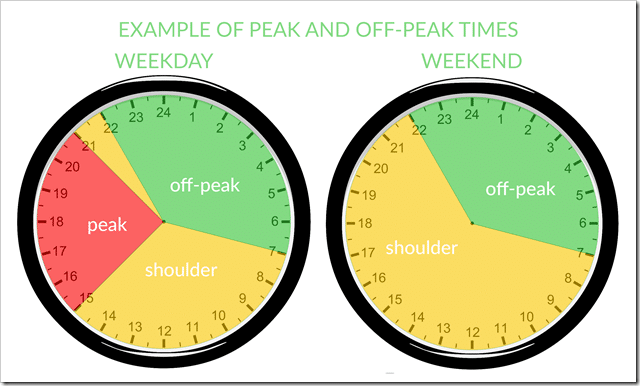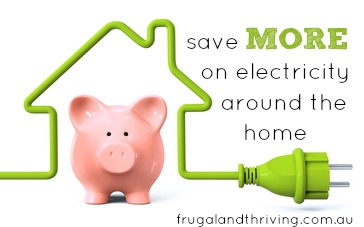Get the Most Savings Out of Your Smart Meter With Minimum Effort
This website may earn commissions from purchases made through links in this post.
This post is sponsored by Energy Australia.

We were baffled.
Looking at mum’s electricity bill, we couldn’t work out why it was so high.
She lives alone. She was working all day. She has a gas hot water heater, gas heating and a gas stove, and yet her bill was higher than ours.
“It must be the old fridge, mum.” I suggested.
But without hard data we were guessing.
There’s a new technology that’s slowly being rolled out across Australia, which can help us pinpoint mum’s energy guzzler. And that technology is a smart meter.
GET UP TO SPEED ON SMART METERS IN 10 SECONDS
Here’s what you need to know about smart metres:
- A smart meter is an electricity metre that measures and records your electricity usage, just like your current (or old) meter.
- The difference is that a smart meter records electricity every 30 minutes and sends that information automatically to the electricity distributor (no more meter readers or estimated bills).
- YOU have access to this (almost) real-time information about how much electricity you use in your home and when you use. Access is via a web-portal, smartphone app, and/or an in-home display. Knowing what times and what days you use more energy helps you identify ways to be more efficient.
- If you live in Victoria, you probably already have a smart meter installed.
- If you live in other states, smart meters are increasingly being made available by energy retailers.
- Having a smart meter allows you to take advantage of a flexible pricing plan where you pay different rates for electricity used during peak, off-peak and shoulder times, which can potentially save you money.
- If you get a smart meter, your current electricity plan will not change unless you choose to change it.
HOW A SMART METER CAN SAVE YOU MONEY
Electricity costs are practically invisible.
We turn on a light or put on the air conditioner, and we don’t really know how much it’s costing us until the bill comes in 3 months later.
A smart meter allows us to see, in almost real time, exactly how much energy we’re using and how much it is costing us.
This means we can more easily judge how much energy the fridge is burning through. We can assess the impact of having the air conditioner on all day.
And we can use this information to become more energy efficient.
The other money saving option available to smart meter users is a flexible pricing plan. A flexible pricing plan allows you to take advantage of different rates for peak, off-peak and shoulder times.
Under the plan, it is cheaper to use electricity during the off-peak hours than during the peak times, when there is the most demand on the grid. You’ll save money by using the bulk of your energy during off-peak periods.
Not everyone will save money on a flexible pricing plan. Those who will benefit most are people who already use the majority of their electricity during off-peak times or people who are willing to change their consumption habits.
If you’re out a lot during the evenings, you’re at home during the day or the weekends, or you use your appliances on the weekends, then you may benefit from a flexible pricing plan.
At the time of writing, only Victorian residents are eligible to choose a flexible pricing plan, although other states are rolling out smart meter installation, and flexible pricing plans may become available in the future.
If you live in another state, you may have access to a similar plan that includes peak and off-peak tariffs if you have a Time of Use (Interval) Meter. You can call your electricity provider and ask them what type of meter you have if you’re not sure.
The following tips will help you maximise your savings with a smart meter or time of use meter.
3 EASY STEPS TO SAVE MONEY WITH OFF-PEAK PRICING
1. KNOW YOUR OPTIONS
Before switching electricity plans, there’s a few things you need to consider.
First, find out what the peak, off-peak and shoulder times are for energy use.
Typically, peak time is between 3pm and 9pm on weekdays, but these times will vary depending on where you live and which supplier you’re with, so it’s important to double check.

Then, as with any bill, use a comparison website to compare the different plans and also plans between suppliers.
If you live in Victoria and want to compare plans, both regular and flexible, you can use the independent Government comparison website.
For other states, the Canstar Blue Comparison site is a great choice.
2. IDENTIFY YOUR CURRENT USAGE
If you have a smart meter installed, you can use the web portal, app or in-home display unit to familiarise yourself with your family’s current energy consumption habits.
Regardless of whether you have a smart meter or time of use meter, make a note of what appliances are running during peak times. When do you normally do your washing? When does the dishwasher run? How much runtime does TV and other tech devices get during the peak hours.
Before you can change your habits, it’s important to know what they are.
3. SWITCH TO OFF-PEAK WITHOUT THE FUSS
To save money on a flexible pricing plan, you want to shift the use of not-on-demand appliances that use a lot of energy to off-peak times. Rather than being a hassle, this can actually save you time as well as money! I’ll show you how.
Wash your clothes during off-peak times by using a timer. If your washing machine is a smart appliance or has an in-built time delay setting, this is easy.
Set the washing machine to run during off-peak times, using cold water to save even more. You might choose to run it while you’re at work, so your washing is ready to hang up when you get home.
If your washing machine doesn’t have a built-in timer, you can pick up a plug-in timer from your local hardware store.
This is what my father used to set the washing machine to run at 5am so he could hang the clothes out first thing in the morning.
String lines up in the garage so that you can hang your clothes inside without worrying about the weather while you’re at work (and of course, save money by not using a dryer).
Defer putting on the dishwasher until bedtime. Stack the dishwasher after dinner and make the kitchen all nice and clean, but wait until bedtime to turn it on. Again, if your dishwasher has a time delay setting, use this so you don’t forget, otherwise put the dishwasher on as part of your bedtime routine.
Maximise your air conditioner’s efficiency. Set your air conditioner to 24°C or above during the summer months. Make the most of solar passive options by closing curtains during the day to keep out the sun and making sure your house is adequately ventilated.
In the evenings, open up windows and doors to make the most of cross-ventilation and the cooler evening air and use a ceiling fan to promote air circulation.
If you have a system that you can set, time the air con to do the hard work of cooling down the house in off-peak times. It takes more energy to cool a room down than it does to keep a room at temperature, so time the air con to do the grunt work just before you get home.
Reduce your heating costs. As with cooling, solar passive options like allowing the sun in to warm the house in winter will reduce your heating costs. To stay warm, defer putting the heater on until as late as possible and choose to add another layer of clothing and increase your activity instead. Keep the thermostat as low as comfortable.
Run the pool pump during off-peak times. Pool pumps do not need to run all the time. 6- 8 hours is sufficient and best run during off-peak times.
Utilise your slow cooker. This is a win-win for everyone. Your cooking is done during off-peak hours and you get to relax at home after work because dinner is already cooked.
Get your media on battery. Evenings is when we are all unwinding in front of the TV. An alternative is to get your media via your laptop or tablet run on battery.
Switch off. Turn off unnecessary lights, fans, heaters, computers and other appliances, including those on standby power.
Smart meters are simply an update on the old type of electricity meters. Unlike the old meters, we as customers can use the smart meters by accessing current information on our energy usage and using this information to make energy efficient decisions that can save us money.






